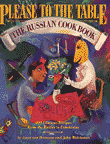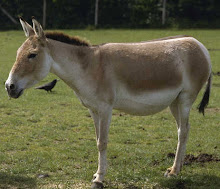 Kurmangazy Sagyrbaev (Russian)
Kurmangazy Sagyrbaev (Russian)Курмангазы Сагырбаев
Kurmangazy Sagirbaiuly (Kazakh)
Құрманғазы Сағырбайұлы
Kurmangazy was a brilliant 19th century Kazakh composer and musician. Various reputable sources give 1806-1879, 1823-1896, 1818-1889, among others, as his birth and death dates. He lived in the western area of what is now Kazakhstan, and is buried just over the border in Astrakhan, Russia.
Renowned for his courage, cunning and skill on the dombra, Kurmangazy wrote numerous kui, brilliant 'mood' solo instrument pieces, of which some 60 are known and played today. Kui or kyui are musical narratives -- traditionally the musician introduces a piece with a summary of the story illustrated by the music, and some information about its history.
Kurmangazy's music is woven into the fabric of Kazakh/Kazakhstani culture. His kuis tell stories of Kazakh warriors (Adai), of the land (Sary Arka, 'Golden Steppe'), and of courage and resistance (Kishkentay is about an 1836 folk uprising). His music is played not only in its original instrumental forms, but is also adapted into popular music. Just today I stumbled across Getting Kazakhified, the blog of a ethnomusicology doctoral student living in Almaty -- her dissertation is on "how the struggle over ethnic/national identities is literally playing itself out through music." This is fascinating stuff, and I'm looking forward to following her ideas and research.
But for now, listen to three different versions of Adai. Whatever the embellishments, pounding hoofbeats across the steppe come through loud and clear.
Kali Zhantleuov on solo dombra. His dombra teacher had been a student of Kurmangazy.
 Asylbek Ensepov on dombra & synthesizer.
Asylbek Ensepov on dombra & synthesizer. According to Werner Linden, the German "mad musicologist," Ensepov describes his music as "dance music, made from kuis, played on the dombra, with computerized accompaniment." Syntho-classical? Does anyone remember Classical Gas? It's next to impossible to find anything about Ensepov, and his 2003 debut disc is out of print (each of the 5,000 copies was numbered and packaged in a tooled leather case), but there are several videos on YouTube: check out Adai & Sultan (where the musician gets the girl!). The kid rocks, and he's not bad to look at either.
 Kazakhstan Ethno-Rock Project Ulytau.
Kazakhstan Ethno-Rock Project Ulytau.Ulytau is a young, all-instrumental folk-metal (yes, folk-metal) band. The trio consists of a classically-trained violinist, a dombrist, and a wailing lead-guitar player. Their first album, Jumyr-Kylysh, consists of traditional Kazakh & classical European pieces (Vivaldi & Bach), all given the Ulytau folk-metal treatment. I saw somewhere that they'd signed with a German label - could they be the first KZ band to make it big in the west? You can find three mp3s on the .ru site (there's also a .kz website). Jumyr-Kylysh is another a traditional Kazakh tune. Asylbek Ensepov has a version of it as well.


No comments:
Post a Comment